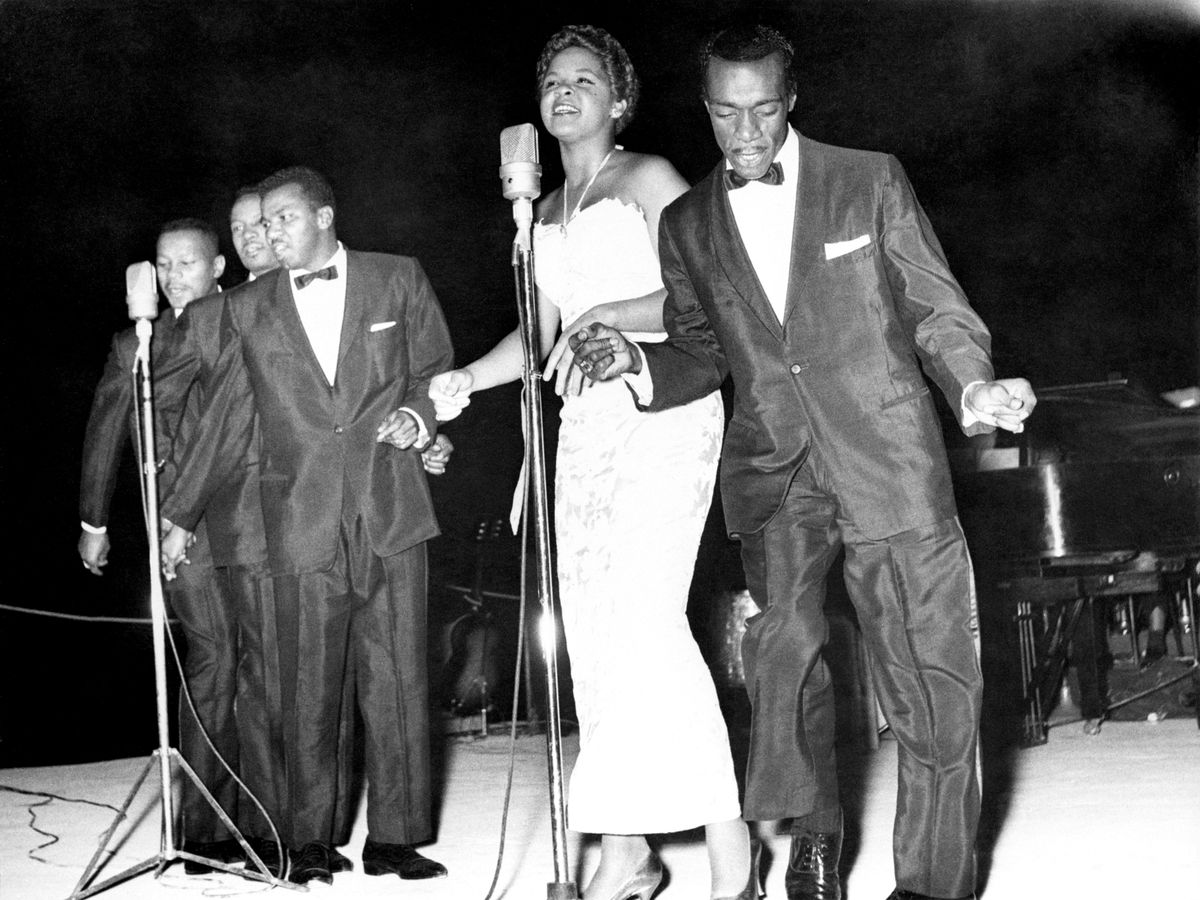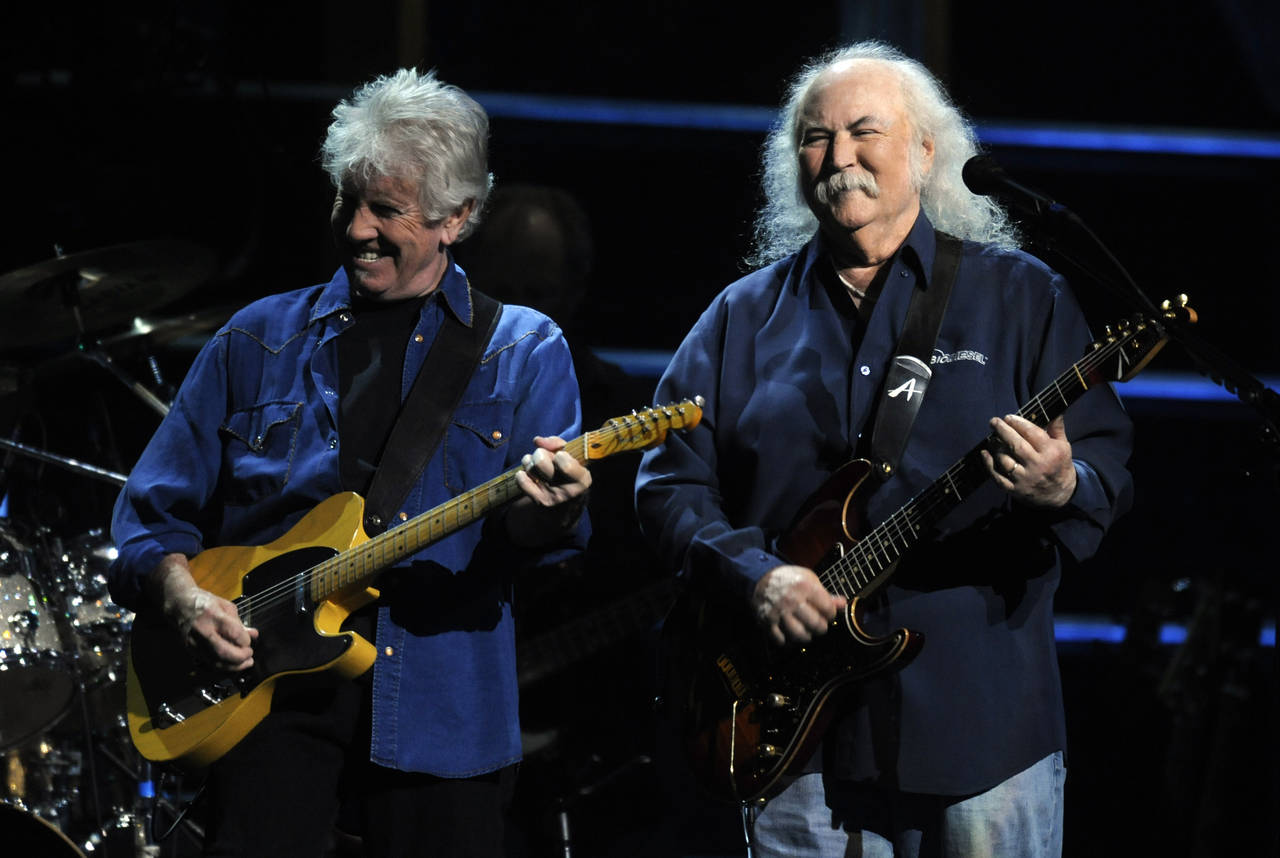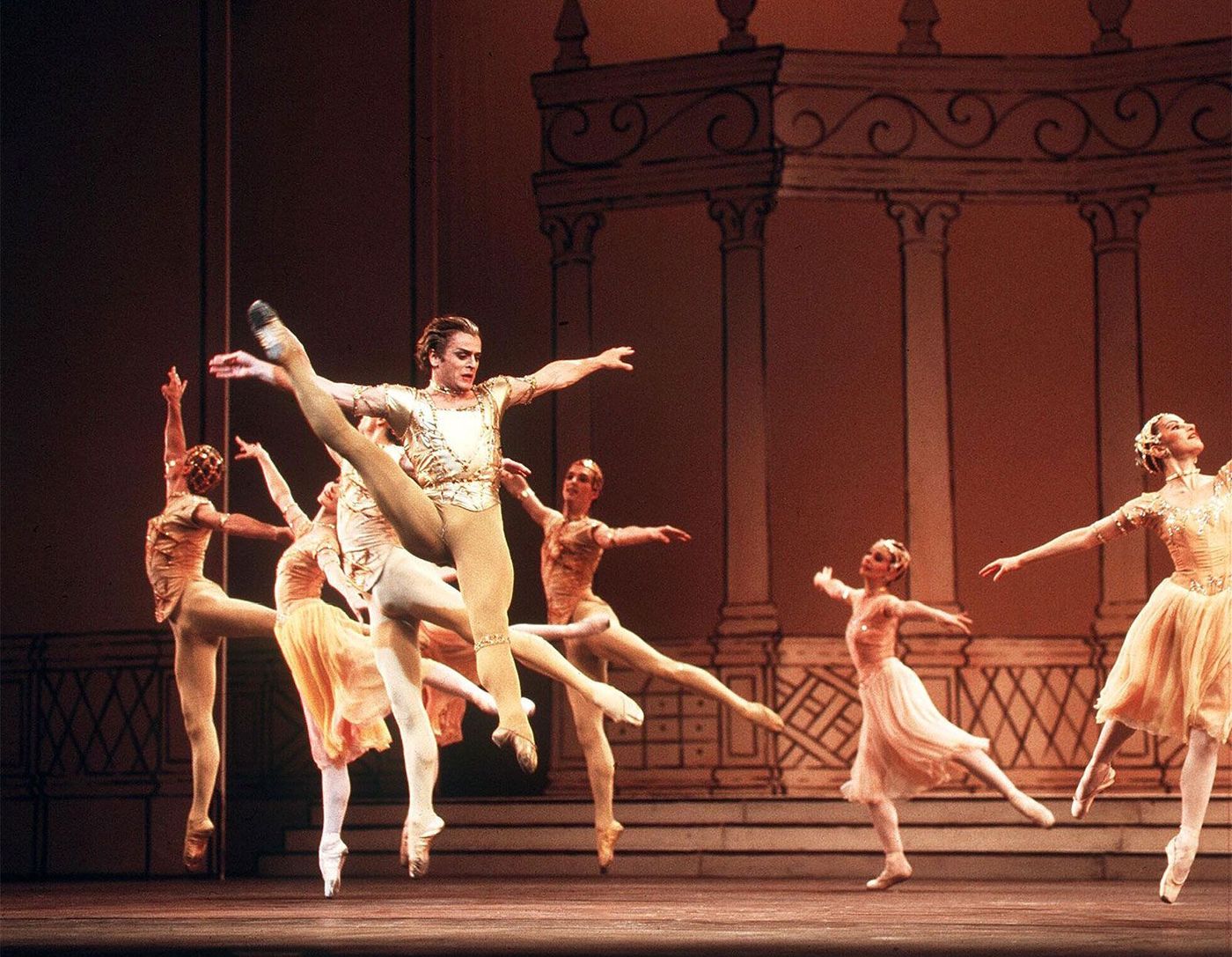Home>Genres>Rock>What Music Genre Did Rock And Roll Come From


Rock
What Music Genre Did Rock And Roll Come From
Modified: March 11, 2024
Discover the roots of rock and roll by exploring the music genre that gave birth to it. Learn about the evolution and influences of rock from its origins.
(Many of the links in this article redirect to a specific reviewed product. Your purchase of these products through affiliate links helps to generate commission for AudioLover.com, at no extra cost. Learn more)
Table of Contents
Introduction
Rock and roll, a genre that has revolutionized the music industry, has its roots deeply embedded in various musical genres. The emergence and evolution of rock and roll can be traced back to the 1940s and 1950s, when it took the world by storm with its energetic, rebellious, and electrifying sound. But where did this influential genre come from?
In order to understand the origins of rock and roll, we need to delve into the rich and diverse musical landscape that preceded it. It is a genre that is a fusion of several musical styles, each contributing its own unique elements and characteristics.
From the blues to gospel, country to jazz, and folk to rhythm and blues, rock and roll has borrowed and adapted from a wide range of genres to create its distinctive sound. By understanding the music that influenced and shaped rock and roll, we can gain a deeper appreciation for this enduring genre and its impact.
In this article, we will explore the different musical genres that laid the foundation for rock and roll and dive into how they shaped its evolution. We will take a closer look at the influence of blues, the fusion of country and rhythm and blues in rockabilly, the role of gospel music, the impact of jazz, and the contribution of folk music.
So, let’s embark on a musical journey through time and uncover the diverse roots of rock and roll. Get ready to explore the rhythmic and melodic threads that have woven together to create one of the most electrifying and influential genres in the history of music.
Origins of Rock and Roll
The origins of rock and roll can be traced back to the mid-20th century, when a combination of musical styles and cultural changes gave birth to a new and exciting genre. It emerged as a rebellious and vibrant form of music that challenged societal norms and captivated the hearts of young listeners.
One of the key elements that influenced the birth of rock and roll was the blues. Originating from African American communities in the southern United States, the blues was characterized by its emotive lyrics, soulful vocals, and bluesy guitar riffs. Artists such as Robert Johnson, B.B. King, and Muddy Waters paved the way for the blues, which served as a foundation for the raw and passionate sound of early rock and roll.
Another influential factor was the rise of rhythm and blues (R&B) in the 1940s. R&B combined elements of jazz, blues, and gospel, creating a more upbeat and danceable sound. Artists like Louis Jordan and Amos Milburn brought R&B to the mainstream, and their energetic performances and catchy melodies had a profound influence on early rock and roll.
Simultaneously, country music was also an important contributor to the origins of rock and roll. The twangy guitars, heartfelt lyrics, and melodic storytelling of country music resonated with audiences across America. Artists like Hank Williams and Bill Monroe incorporated elements of country into their music, laying the groundwork for the country-infused subgenre of rockabilly.
As the 1950s rolled in, a new generation of young musicians began to experiment with these various styles of music. The blending of blues, R&B, and country laid the foundation for what would later become known as rock and roll. The integration of electric guitars, driving rhythms, and energetic vocals created a sound that was distinctly different and captivating.
The social and cultural changes of the time also played a significant role in the emergence of rock and roll. Post-World War II, with the growth of the teenage demographic and the advent of television, there was a shift towards youth culture and rebellion against the status quo. Rock and roll became the soundtrack of this generation, embodying their desire for freedom, expression, and individuality.
With its roots firmly grounded in the blues, R&B, country, and the changing cultural landscape, rock and roll became a force to be reckoned with. It gave a voice to a generation and forever transformed the music industry.
The Influence of Blues on Rock and Roll
The blues, a genre that originated from African American communities in the southern United States, played a pivotal role in shaping the sound and spirit of rock and roll. It served as a foundation for the raw and emotive nature of the genre and provided a voice for African American artists whose music was heavily influenced by their experiences of oppression and hardship.
The blues was characterized by its distinctive 12-bar chord progression, typically played on guitars, and its soulful vocals. Artists like Robert Johnson, B.B. King, and Muddy Waters showcased the power of the blues through their powerful lyrics and mesmerizing guitar playing. Their songs delved into themes of love, loss, and personal struggle, resonating with audiences across racial and cultural boundaries.
When rock and roll emerged in the 1950s, it drew heavily from the blues. Many early rock and roll songs borrowed the 12-bar blues structure and incorporated bluesy guitar riffs and vocal styles. This fusion of blues and rock elements created a powerful and energetic sound that appealed to a wide audience.
One of the main contributions of the blues to rock and roll was its emphasis on personal expression and emotion. The blues allowed artists to channel their feelings and experiences into their music, creating a genuine and heartfelt connection with their audiences. This emotional authenticity became a defining characteristic of rock and roll, setting it apart from other genres of the time.
The influence of the blues can be heard in some of the most iconic rock and roll songs. Led Zeppelin, for example, drew inspiration from blues legends like Howlin’ Wolf and Willie Dixon, infusing their music with bluesy guitar riffs and powerful vocals. The Rolling Stones also paid homage to their blues roots by covering songs from artists like Muddy Waters and Willie Dixon, and incorporating blues elements into their own compositions.
Furthermore, the blues served as a platform for African American artists to gain recognition and success in the predominantly white music industry. Artists like Chuck Berry and Little Richard, with their energetic performances and dynamic stage presence, brought a new level of excitement to rock and roll. They influenced a generation of musicians and became inspiration for future generations to blend different genres and push the boundaries of music.
The blues continues to be a significant influence on rock music to this day. It is a reminder of the power of music to transcend boundaries and unite people through shared emotions and experiences. The blues laid the foundation for rock and roll, and its impact can still be heard in the soulful and passionate music that continues to captivate audiences worldwide.
Rockabilly: The Fusion of Country and Rhythm and Blues
Rockabilly, a subgenre of rock and roll, emerged in the 1950s as a unique fusion of country music and rhythm and blues. It combined the twangy guitars and heartfelt lyrics of country with the driving rhythms and energetic vocals of rhythm and blues, creating a sound that was both familiar and exhilaratingly new.
One of the key figures credited with popularizing rockabilly is Elvis Presley, often referred to as the “King of Rock and Roll.” He successfully melded the influences of blues, country, and R&B, creating a musical style that resonated with audiences around the world. His energetic performances and charismatic stage presence captured the imagination of millions and set the stage for the explosion of rock and roll.
Rockabilly songs often featured up-tempo rhythms, infectious melodies, and catchy guitar solos. The lyrics often drew from the experiences of young people, exploring themes of love, rebellion, and youthful exuberance. This combination of country storytelling with the energy of rhythm and blues created a vibrant and irresistible sound.
The instrumentation in rockabilly music was also distinctive. The use of slap bass, characterized by the rhythmic slapping of the strings against the fingerboard, gave the music a driving pulse. The guitars incorporated elements of both country and blues, with twangy licks and bluesy bends creating a unique blend of styles.
Alongside Elvis Presley, other notable names in rockabilly include Carl Perkins, Jerry Lee Lewis, and Johnny Cash. These artists brought their own individuality to the genre, each contributing to its development and leaving an indelible mark on the history of rock and roll.
The impact of rockabilly extended beyond its musical influence. It became a cultural phenomenon, with its distinctive fashion and rebellious attitude redefining the image of the young generation. Pompadour hairstyles, leather jackets, and rolled-up jeans became iconic symbols of the rockabilly culture.
Rockabilly had a lasting impact on subsequent generations of musicians. Its energetic and infectious sound laid the groundwork for the development of rock and roll as we know it today. The fusion of country and rhythm and blues in rockabilly served as a bridge between genres, breaking down barriers and paving the way for greater experimentation and innovation in music.
While rockabilly’s popularity declined in the late 1950s, its spirit and influence can still be heard in modern rock and roll and other genres. The fusion of country and rhythm and blues continues to captivate audiences with its timeless appeal and infectious energy.
The Role of Gospel Music in the Development of Rock and Roll
Gospel music, with its roots in African American churches, played a significant role in the development of rock and roll. Its powerful vocals, uplifting melodies, and deep spiritual connection laid the foundation for the passionate and soul-stirring sound of the genre.
Gospel music is characterized by its call-and-response singing style, where a lead vocalist is joined by a chorus of backing singers, creating a dynamic and harmonious sound. This communal and interactive approach to music inspired a sense of unity and celebration, which would later be embraced by rock and roll.
Artists such as Mahalia Jackson and Sister Rosetta Tharpe brought gospel music to a wider audience with their captivating performances. Their powerful voices and emotive delivery left a lasting impact on the music scene, influencing not only other gospel artists but also rock and roll musicians.
The influence of gospel can be heard in the vocal techniques and passionate performances of early rock and roll artists. Many rock and roll singers, such as Little Richard and Elvis Presley, drew inspiration from gospel music, infusing their songs with the same intensity and fervor found in the spiritual music of the church.
Lyrically, gospel music often explores themes of redemption, hope, and faith. These themes resonated with both gospel and rock and roll artists, as they sought to connect with audiences on a deeper emotional level. The expressive and heartfelt nature of gospel lyrics influenced the storytelling aspect of rock and roll, adding depth and meaning to the songs.
Furthermore, gospel music provided a platform for African American artists to express their creativity and talent. Many of the early rock and roll pioneers, such as Chuck Berry and Little Richard, were influenced by gospel music from their childhoods. They carried the spirit and energy of gospel into their rock and roll performances, bridging the gap between the sacred and the secular.
In addition to its musical influence, gospel music also played a significant role in the civil rights movement of the 1950s and 1960s. The songs of freedom, equality, and justice became anthems for the movement, inspiring social change and unity. This connection between music and social activism would later resonate in the socially conscious music of rock and roll artists, who used their platform to address important issues.
The legacy of gospel music in rock and roll is undeniable. Its powerful vocals, uplifting melodies, and deep spiritual connection continue to be influential to this day. Gospel music brought a sense of passion, emotion, and authenticity to rock and roll, shaping not only the sound and feel of the genre but also the values and messages it conveyed.
The Impact of Jazz on Rock and Roll
Jazz, a genre born out of African American communities in the early 20th century, had a profound impact on the development of rock and roll. Its improvisational nature, complex harmonies, and energetic rhythms influenced the musical vocabulary of rock and roll, introducing new elements and pushing the boundaries of what was possible in popular music.
One of the key contributions of jazz to rock and roll was its emphasis on improvisation. Jazz musicians pushed the boundaries of traditional song structures, often engaging in spontaneous solos and dynamic interactions with other musicians. This freestyle approach to music encouraged experimentation and the exploration of new sounds, which would later be embraced by rock and roll artists.
Furthermore, jazz introduced complex harmonies and chord progressions that were previously unheard of in popular music. Artists like Duke Ellington and Thelonious Monk challenged traditional tonalities and embraced dissonance in their compositions. This harmonic complexity brought a new level of sophistication to rock and roll, expanding its musical palette and pushing it beyond its blues and country roots.
The rhythmic elements of jazz also left a lasting impact on rock and roll. Jazz musicians, with their mastery of swing rhythms and syncopation, introduced a new sense of groove and energy to popular music. This rhythmic freedom and experimentation permeated rock and roll, resulting in infectious rhythms that made audiences want to dance and move.
Moreover, jazz served as a breeding ground for many talented musicians who would go on to become influential figures in rock and roll. Artists like Louis Armstrong and Charlie Parker showcased virtuosic performances on their respective instruments, inspiring future generations of rock guitarists, saxophonists, and trumpet players.
The influence of jazz can be heard in the music of early rock and roll pioneers. Artists like Chuck Berry and Fats Domino incorporated elements of jazz improvisation into their guitar and piano solos, infusing their rock and roll songs with a sense of spontaneity and creativity.
Jazz also provided a platform for African American musicians to gain recognition and success in a music industry that was, at the time, dominated by white artists. Many jazz musicians, such as Ella Fitzgerald and Nat King Cole, paved the way for subsequent generations of African American musicians, including those in the rock and roll genre, to break through racial barriers and make their mark on the music industry.
The impact of jazz on rock and roll continues to be felt to this day. Its legacy can be heard in the complex harmonies, improvisational solos, and rhythmic intricacies of rock music across various subgenres. Jazz expanded the possibilities of popular music, pushing the boundaries of creativity and setting the stage for the innovation and experimentation that defines rock and roll.
The Contribution of Folk Music to the Birth of Rock and Roll
Folk music, with its storytelling lyrics, acoustic instrumentation, and emphasis on authenticity, played a crucial role in the birth of rock and roll. As a genre rooted in traditional and often rural communities, folk music provided a sense of connection to America’s roots and served as a source of inspiration for the early rock and roll pioneers.
Folk music’s emphasis on storytelling directly influenced the lyrical content of rock and roll songs. Folk songs were often narratives about social issues, personal experiences, or historical events. This focus on storytelling found its way into early rock and roll, as artists like Bob Dylan and Woody Guthrie incorporated meaningful and thought-provoking lyrics into their songs. Rock and roll’s fusion of catchy melodies with evocative storytelling gave the genre a distinctive depth and resonance.
Instrumentation also played a role in the crossover between folk and rock and roll. Folk music relied heavily on acoustic instruments like guitars, banjos, and harmonicas. These instruments found their way into early rock and roll, adding a rustic and earthy element to the genre. Artists like Elvis Presley and Bill Haley incorporated acoustic guitar into their performances, merging the energy of rock and roll with the authenticity of folk.
Another important aspect of folk music’s contribution to rock and roll was its connection to social and political activism. During the 1950s and 1960s, folk music became intertwined with the civil rights and anti-war movements. The songs of artists like Pete Seeger and Joan Baez addressed social injustices and called for change. This spirit of activism and protest resonated with the youth of the time and influenced the socially conscious music of the rock and roll era.
Folk music also served as a source of inspiration for rock and roll in terms of its emphasis on authenticity. Folk musicians often performed in intimate, grassroots settings, fostering a sense of connection and community with the audience. This organic and genuine approach to music influenced rock and roll artists, who sought to capture that same sense of intimacy and connection in their performances.
Furthermore, folk music’s embrace of cultural and musical traditions from various regions and communities also resonated with the diversity of influences in rock and roll. Both genres drew from the rich tapestry of American musical heritage, incorporating elements of blues, country, and other styles into their sound. This fusion of genres, propelled by the folk music movement, helped shape the diverse and eclectic nature of rock and roll.
The contribution of folk music to the birth of rock and roll is immeasurable. Its storytelling lyrics, acoustic instrumentation, emphasis on authenticity, connection to social activism, and inclusive approach to music all left an indelible mark on the genre. Folk music fostered a sense of heritage, defiance, and unity that influenced the lyrical, musical, and cultural aspects of rock and roll, making it a genre that would resonate with generations to come.
Conclusion
The birth and evolution of rock and roll were deeply influenced by a diverse range of musical genres. From the blues to gospel, country to jazz, and folk to rhythm and blues, each genre left its mark on rock and roll, contributing to its unique sound, energy, and cultural impact.
The blues served as the foundation for rock and roll, with its emotive lyrics, soulful vocals, and bluesy guitar riffs. Rhythm and blues added an upbeat and danceable element, while gospel music brought passion, authenticity, and a sense of spirituality. Jazz introduced improvisation, complex harmonies, and rhythmic intricacies. Folk music contributed storytelling lyrics, acoustic instrumentation, and an emphasis on authenticity. Each genre provided a distinctive element that shaped the evolution of rock and roll.
Rockabilly, the fusion of country and rhythm and blues, brought a dynamic and rebellious energy to the genre. The impact of jazz introduced complex harmonies, improvisational solos, and infectious rhythms. The role of gospel music provided powerful vocals, emotional depth, and a sense of unity. Folk music brought storytelling, authenticity, and a connection to social activism.
Together, these genres created a musical landscape that paved the way for the birth of rock and roll. With its energetic and rebellious spirit, rock and roll emerged as the voice of a generation, challenging societal norms and captivating audiences worldwide.
The influence of these genres continues to be heard in modern rock music. Guitars still unleash bluesy riffs, vocalists channel the soulful passion of gospel, and bands explore the improvisational freedom of jazz. Rock and roll not only represents a musical genre but a cultural movement of self-expression and rebellion.
As we reflect on the rich tapestry of musical influences that shaped rock and roll, we gain a deeper appreciation for the genre’s roots and the diverse contributors who made it possible. The fusion of these genres has created a timeless and enduring musical legacy that resonates with audiences of all generations.
So, let us embrace the spirit of rock and roll, celebrate its roots, and keep the music alive as we continue to explore new horizons and push boundaries in the ever-evolving world of music.











